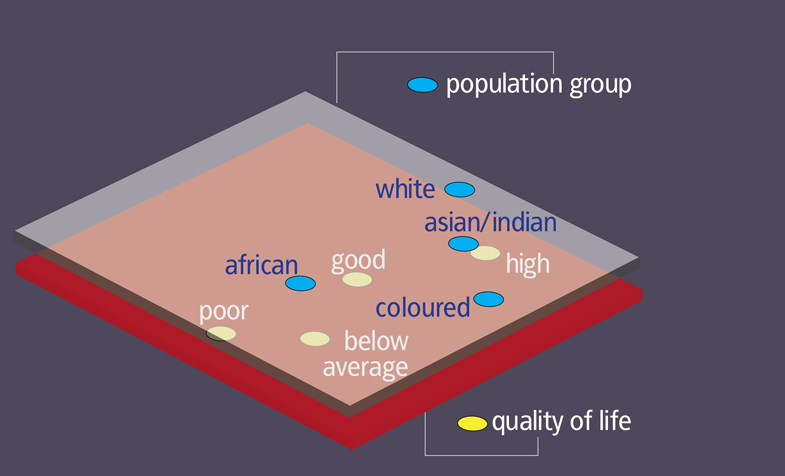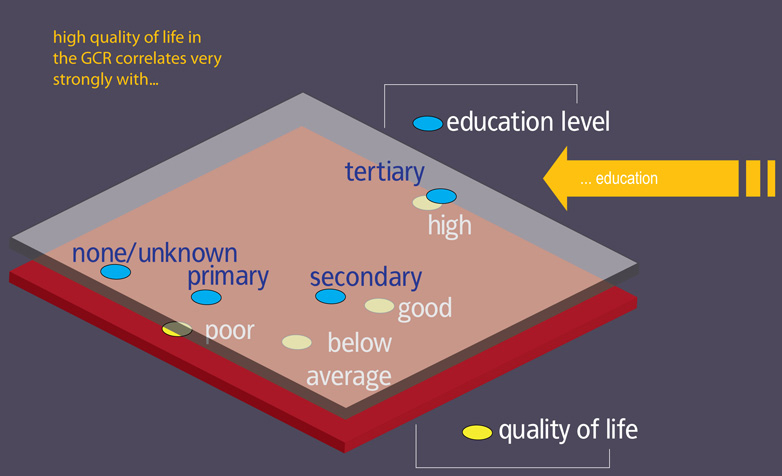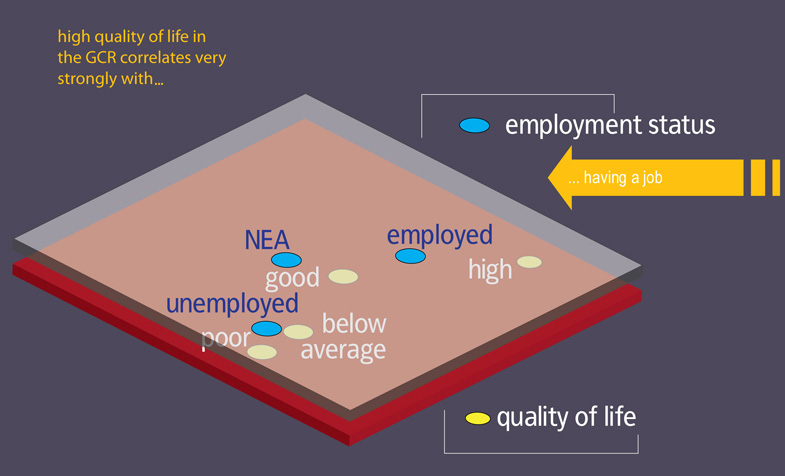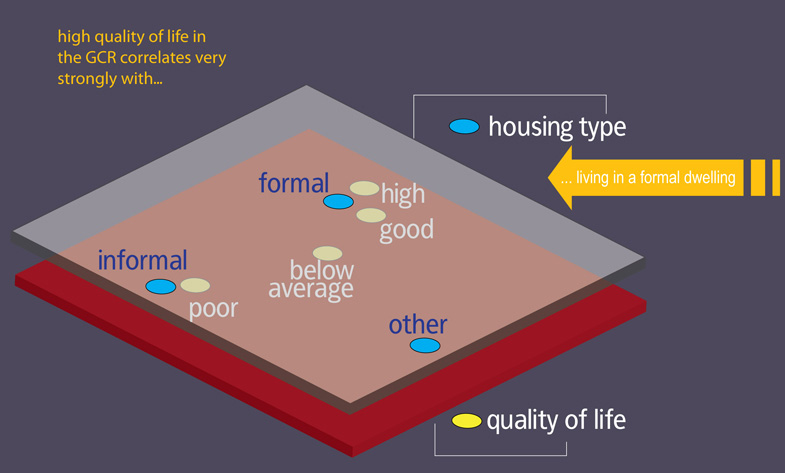
| introduction |
| the laws of attraction |
| digging deeper |
| correspondence mapping of quality of life and education level |
|
|
| correspondence mapping of quality of life and employment status |
|
| correspondence mapping of quality of life and housing type |
|
| correspondence mapping of quality of life and population profile |
 |
Given South Africa’s history of inequality and racial oppression, it is to be expected that socio-economic and demographic factors will have a direct impact on quality of life in the city-region. To better understand some of these dynamics, we used ‘correspondence mapping’, which allows variables to be displayed in space where their relationships across two or more dimensions can be shown. The variables must be discrete – nominal, ordinal or continuous variables segmented into ranges. The map produces a measure of distance between two points (the points are values of the variables); distance is a measure of correlation, so the less the distance the higher the correlation and vice versa. As the correspondence maps on this page show, high quality of life in the GCR correlates very strongly with living in a formal dwelling, having a job and – crucially – high education. The reverse is true for low quality of life. It is also not surprising to find that white, Indian and coloured respondents were far more likely to enjoy higher quality of life, though it is noticeable that coloured respondents are being pulled in two opposing directions, reflecting the class make-up of this community, which has both a substantial working-class and a growing large middle-class. The African cohort, most importantly, is not right next to ‘poor’ or ‘below average’ quality of life, but is somewhere between them and ‘good’ quality of life, reflecting the ongoing transformation of post-apartheid South Africa.This is not a causal analysis – the maps demonstrate the strength of relationships between variables rather than trying to prove a causal link. But the closeness of education to the more positive end of the quality of life scale, combined with the national and provincial government emphasis (and expenditure) on education, suggest that quality of life may not improve dramatically but investments are being made in exactly the right area.
|



